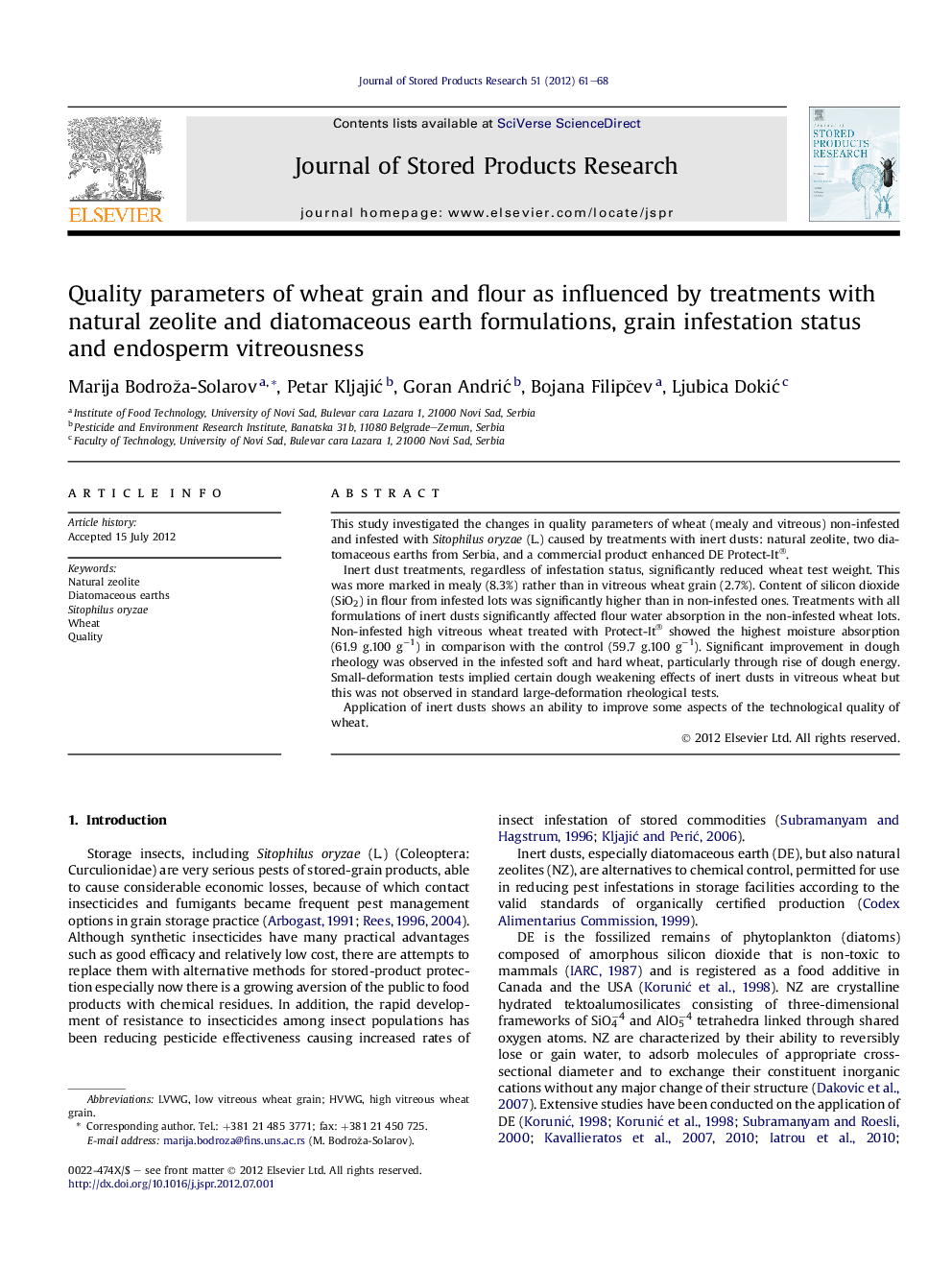| Article ID | Journal | Published Year | Pages | File Type |
|---|---|---|---|---|
| 4517165 | Journal of Stored Products Research | 2012 | 8 Pages |
This study investigated the changes in quality parameters of wheat (mealy and vitreous) non-infested and infested with Sitophilus oryzae (L.) caused by treatments with inert dusts: natural zeolite, two diatomaceous earths from Serbia, and a commercial product enhanced DE Protect-It®.Inert dust treatments, regardless of infestation status, significantly reduced wheat test weight. This was more marked in mealy (8.3%) rather than in vitreous wheat grain (2.7%). Content of silicon dioxide (SiO2) in flour from infested lots was significantly higher than in non-infested ones. Treatments with all formulations of inert dusts significantly affected flour water absorption in the non-infested wheat lots. Non-infested high vitreous wheat treated with Protect-It® showed the highest moisture absorption (61.9 g.100 g−1) in comparison with the control (59.7 g.100 g−1). Significant improvement in dough rheology was observed in the infested soft and hard wheat, particularly through rise of dough energy. Small-deformation tests implied certain dough weakening effects of inert dusts in vitreous wheat but this was not observed in standard large-deformation rheological tests.Application of inert dusts shows an ability to improve some aspects of the technological quality of wheat.
► Inert dusts treatments significantly decreased percentage of insect-damaged grains. ► Test weight significantly reduced in inert-dust treated samples. ► Inert dusts significantly increased water absorption in non-infested wheat flour. ► Inert dust treatments significantly improved dough energy in infested wheat. ► Inert dusts can improve technological quality of insect-damaged wheat.
